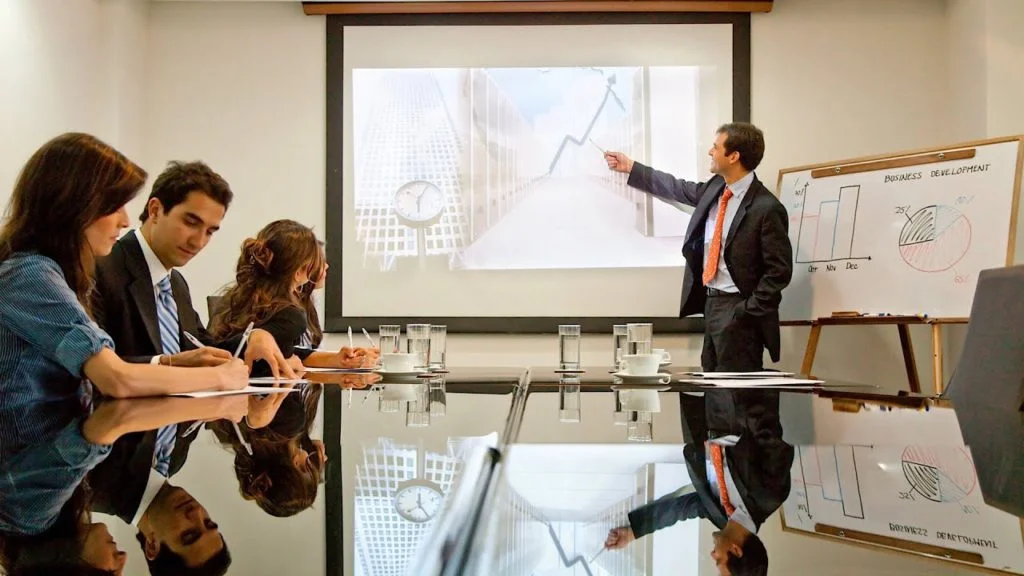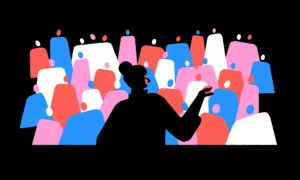Presentations are a crucial component of every educational syllabus. We are asked to present a topic in front of our classmates from an early age. It can be a group presentation or it might be just you participating in a competition. Either way, you have to elaborate a topic in detail, in front of an audience.
Presentations are not limited just to schools. Being adept at presenting a topic is a much required skill in the professional field.
Presentations have different categories based on their purposes— informative (to give general information about any topic), demonstrative (to demonstrate the steps or working), persuasive (persuade the audience to perform something), inspirational (to inspire the audience), etc.
Why Do We Need Presentations?
The central tenet of presentations is to build fluency and confidence in public speaking. Along with that, we acquire skills in elucidating our topic clearly, concisely, and effectively, and better communication with the audience.
We can find the same information on the internet. But presenting a topic allows us to put forward our own point of view. It provides a different perspective to the audience.
Presentations include speeches, debates, seminars, webinars, e-learning, etc.

The Best Presentation Tips for You!
There are a few pointers that are applicable to every form of presentation. And we, at Podium School, are here to give you the best tips to follow while delivering a presentation that would charm your audience with immediate effect. Read on to know how!
Start Strong with a Powerful Introduction!
When people think of presentations, they already dread a boring session. So, if the introduction is catchy, the audience gets more interested in the presentation.
Begin your presentation with a startling fact, statistical analysis, captivating story, or a question. This will grab the attention of your audience and keep them hooked throughout the presentation. The facts and the statistical values must be correct and accurate.
Do introduce yourself so that the audience feels familiar with the speaker. Don’t forget to address everyone with a smile and a small “good morning”. Keep the mood light and jolly.

Use Props and Models
Well, the principal part of a presentation is how you are presenting. We can use PowerPoint slides, charts, or models to present our topic. Make sure that whatever you are using, has to be clear, innovative, and attention-grabbing.

Don’t cram your slides and charts with long paragraphs. Using big paragraphs in a presentation is the equivalent of reading a textbook. Instead, use bullet points to convey only the important points. Try including images, graphs, tables, etc. so that your content is intelligible. Handmade or ready-made models help illustrate the topic with more clarity and increase the comprehension of the audience.
Softwares such as using MS Powerpoint, Google Slides, Canva, etc. can help you design creative and attractive presentations.
Interact With Your Audience
As the presentation keeps going ahead, the audience starts to lose interest. Your job is to keep everyone indulged. Interacting with your audience not only helps in the audience being attentive, but they are able to understand a little better.
Ask questions like “how many of you have observed this?”. Citing examples from daily life is a pro tip that everyone should keep in their pockets. When a person has observed a phenomenon in real life, they comprehend the facts better. Use examples from daily life or share a captivating story that can help the audience relate to you.

Body Language
One of the most important aspects to be taken into account while presenting a topic is our body language. It includes eye contact, gestures, postures, and even appearance.
You are not addressing just one person, the whole of the audience is listening to your presentation. Try to look at each person, glance at them, and maintain momentary eye contact. It helps build a connection between the speaker and the listener.

Your body posture while presenting should be straight and not slouching. Look confident. Include hand gestures, where necessary, to illustrate better.
Dress neat and tidy. Keep a professional look. It gives off an impression that you are serious about this presentation.
Deliver Your Presentation Confidently
When you are presenting your content, you must speak fluently, confidently, and clearly. The tone and pitch of your voice must vary accordingly. Raise your pitch where you need to emphasize a word or phrase. Keep your tone 10-20% informal and 80-90% formal.
Being a learner itself, you know which sections are difficult to understand. Elucidate those sections in easy language. Avoid using jargon and strong vocabulary to provide an easy and comprehensive matter. Don’t add useless points, keep it short and concrete.
This will leave an impression on everyone as you yourself have understood the topic and are capable of explaining it to others as well. Check out this winner speech at the Toastmaster’s International 2018!

Follow The 7 C’s
Here is a very important tip which is useful not only in presentations but also in your general communication and public speaking skills. Encompass these 7’Cs in your speech, and you will have mastered the art of communication.
While delivering your presentation, your content should follow these seven Cs-
- Clear
- Concise
- Concrete
- Correct
- Coherent
- Complete
- Courteous
Nuances Which Enhance Your Presentations
- Include humor. Crack a joke here and there, but only the ones relating to your topic. Let the audience enjoy your presentation

- Give the audience an opportunity to ask questions at the end of the presentation. Clear their doubts.
- If it was a group presentation, acknowledge and show your gratitude towards your team members
- End your presentation by thanking your supervisor for giving you an opportunity to elucidate the topic.
- And don’t forget to thank your audience for being patient and listening attentively.
Final Thoughts
Public speaking is one of the many skills we all need to acquire among other co-curricular activities. It helps develop our personality, makes us look more educated and appealing.
Presenting in front of an audience gives the heebie-jeebies to a majority of people. And even if a person is confident enough to deliver an eloquent presentation, what are the chances that it was effective and impressive?
Don’t you worry about it, we got your back. Podium School is a platform that provides you with public speaking tips which will help you become the star orator no one can get enough of.
Share with your friends





